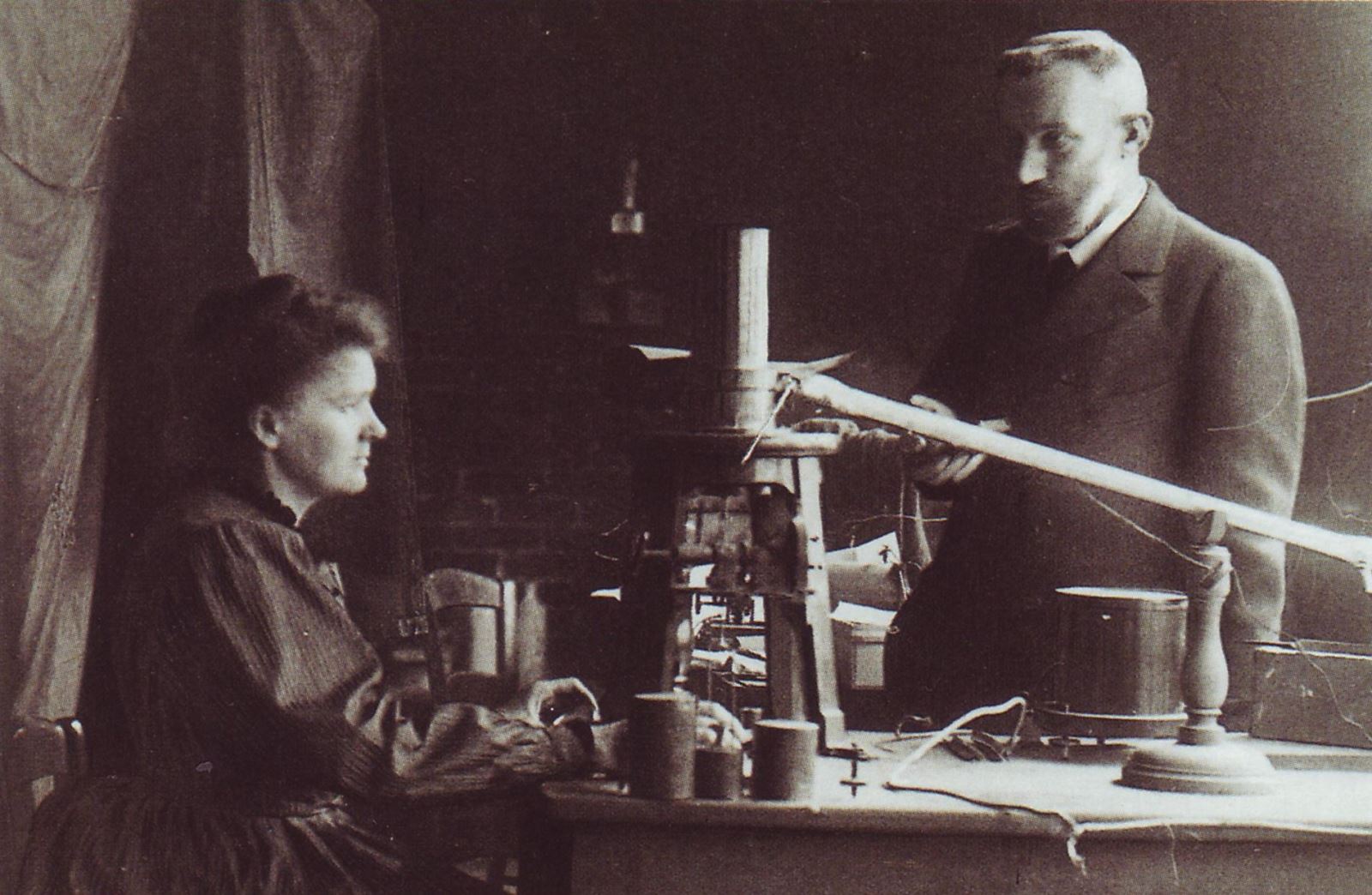On 20 May 1921, the President of the USA, surrounded by the Ambassador of France, the Minister Plenipotentiary of Bologna, members of the cabinet, scientists and members of the judiciary, received in the courtyard of the White House a humble, skinny lady dressed in black. The President told her: “It has been your fortune to accomplish an immortal work for humanity. I have been commissioned to present to you this little phial of radium—one gram. To you we owe our knowledge and possession of it, and so to you we give it, confident that in your possession it will be the means further … to widen the field of useful knowledge and research, and to alleviate suffering among the children of man.” The lady was Madam Curie.
Marie Skłodowska, known today as Madame Curie, was born in Warsaw, Poland, on 7 November 1867. Her father was a teacher of physics at a secondary school in Warsaw and her mother was a skilled pianist; Mania—Marie’s nickname—inherited her father’s brains and the hands of her mother; she showed an early efficiency and great fondness of experimental science. However, her parents did not allow any of their five children to overstrain themselves studying, as tuberculosis ran in their family.
The Skłodowska children prayed every evening: “We appeal to you God to restore our mother’s health”; their mother was very sick and eventually died of tuberculosis when Manya was ten years old. After the mother had passed, the family used to gather around the table sad and poor, for their father had lost his job at the secondary school because of his political activity towards the liberation of Poland from the tyranny of the Russian Czar. He opened a boarding school that received little success; the family, thus, suffered from poor living despite their open minds and their appetite for life.
Those were the difficult circumstances in which Manya was raised; poverty and need from one side, resistance and political activity and disorder from the other; yet, the family survived it all. Years passed and Manya graduated from high school, earning a gold medal for excellence in 1883. One year later, Manya returned from her mother’s hometown, the countryside, to Warsaw to face an uncertain future. She and her elder sister Bronya dreamed to study at the Sorbonne, but how could they achieve that while they barely had enough money to cover the tuition of only one?

It seemed an intractable problem; Manya dealt with it saying “I have a solution” and disclosed her idea to her sister “I will find a job and help you till you complete your studies, and then exchange assistance”. This was the plan that was achieved and paid off. Manya worked as a nanny for a rude, bad tempered lady, who economized from the salaries of her employees and was fond of gambling. Unfortunately, Manya fell in love with Kazimierz, her first love, who was son of this stubborn lady, who, of course, rejected the marriage of her son to the girl working for them.
Years and events passed, but Manya did not give up her plan and ambition. With the assistance of Manya, her sister Bronya completed her studies of medicine at the Sorbonne, and it was Manya’s turn as per their agreement. She joined the Faculty of Science at the age of 23 and spent four years of continued struggle between studying, working, and saving money from her living expenses after her sister failed to fulfill her promise to her.
Manya worked at the Faculty of Science washing lab tools, cleaning ovens, and preparing scientific experiments; her health worsened due to malnutrition and exhaustion between study and work. However, she overcame all these conditions and acquired her Master’s in both physics and mathematics in 1893. She married Dr. Pierre Curie, who was the Head of the Laboratory at the Municipal School of Chemistry and Nature in Paris and had scientific contributions of great value. Dr. Curie was thirty five-years old and Marie adopted his name later.
After marriage, Marie, or Madame Curie, was responsible of the home affairs; she gave birth to two girls while she was studying for her PhD degree in physics. She carried out painstaking and continuous effort and, thus, suffered damage in her left lung as a result of the inherited infection in her family.
_and_Marie_Sklodowska_Curie_(1867-1934)%2c_c__1903_(4405627519).jpg)
Doctors advised her to stay in a hospital, but she did not pay attention and continued her research with her husband, accomplishing unprecedented achievements. She encouraged her husband to conduct further tests on William Roentgen’s discovery of the X-ray and its stunning properties in passing through objects. She obtained her PhD degree in that field from the Sorbonne and that was the beginning of Radium discovery.
Madame Curie started on a path seeking one PhD degree but ended with two Nobel Prizes. This article was not enough to reveal more of the secrets of a woman imprinted her name firmly in the timeline of the history of science.